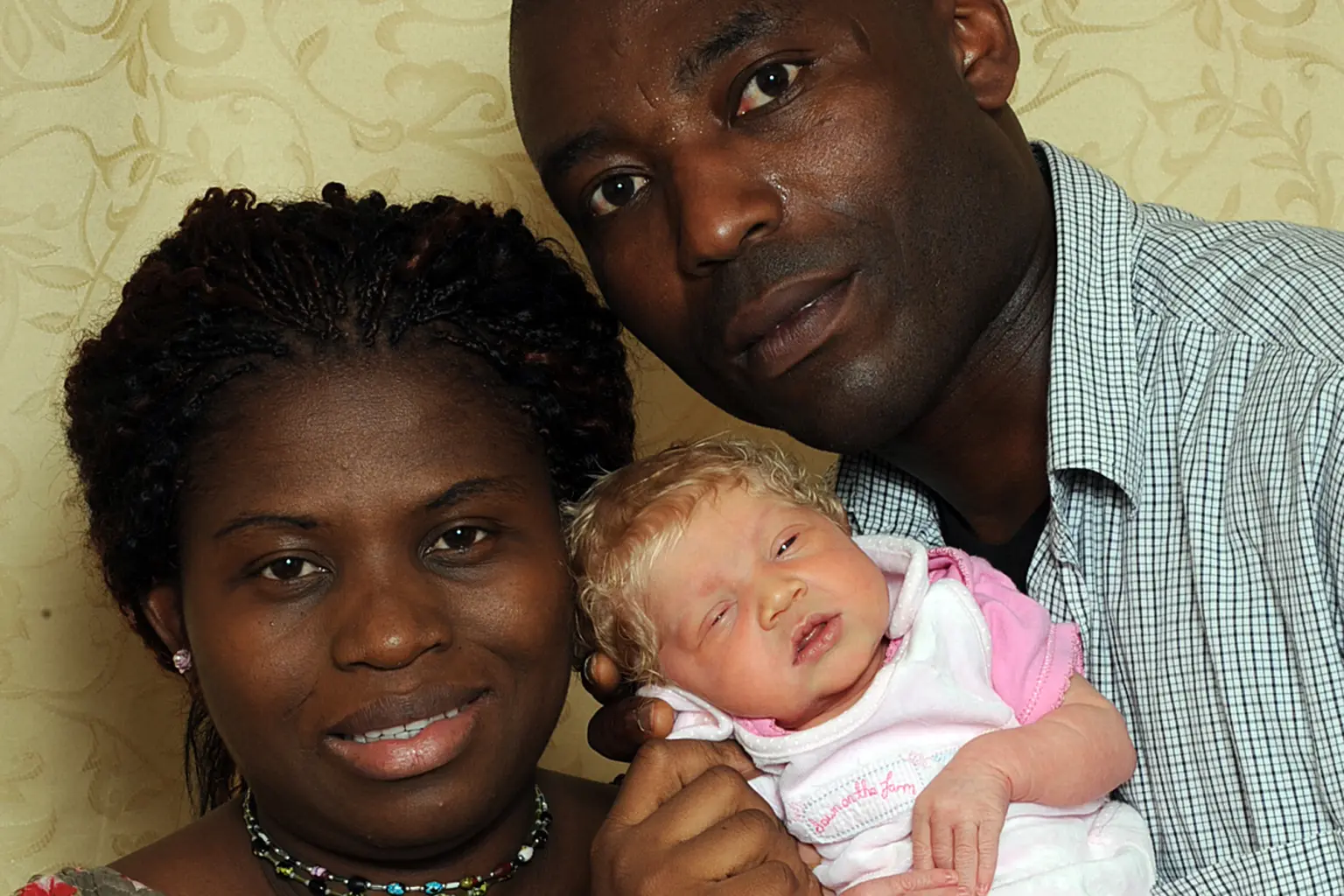The Baby Who Defied Genetics
In July 2010, at Queen Mary’s Hospital in Sidcup, Kent, a story unfolded that seemed more like a fairytale than medical reality. Ben and Angela Ihegboro, Nigerian immigrants living in the UK, already had two children, both with dark skin like their parents. Nothing hinted at the surprise awaiting them when their third child was born.
When baby Nmachi was placed into her mother’s arms, the room fell silent. Instead of the brown skin and dark curls they expected, she had pale ivory skin, blonde ringlets, and piercing blue eyes. Doctors initially suspected albinism, but further checks suggested she was not an albino — though some experts later noted the condition was not completely ruled out .

Ben recalled the moment with disbelief:
“We both sat there speechless. I kept asking myself — how is this possible?”
Angela, however, had only love in her eyes:
“She is perfect. She is our miracle. Her skin color doesn’t matter — she’s our daughter, and that’s all we see.”
The Genetic Mystery
Scientists quickly weighed in. Experts explained that genetics is far more complex than most people imagine. Recessive “white” genes — buried deep in ancestral DNA — can resurface generations later. Yet what made Nmachi’s case extraordinary was not just her pale skin but her naturally blonde hair and striking blue eyes, features extremely rare even among most white babies.
Professor Bryan Sykes, a leading geneticist from Oxford University, commented:
“This is a remarkable case. Recessive genes may explain the skin tone, but blonde hair and blue eyes suggest either a spontaneous genetic mutation or an incredibly rare genetic combination.”
In other words, Nmachi might be one in millions — a child whose very existence rewrote what people thought they knew about inheritance and race.

Reactions Around the World
The Ihegboro family’s story spread rapidly across British and international media. Sky News, TIME, CBS, and newspapers across the globe reported on the “miracle baby” who stunned both the public and experts. Some called her “proof of God’s wonders,” while others speculated about genetics and ancestry.
Her older brothers were equally astonished. At first confused, they soon embraced their little sister with pride, calling her their “special angel.”

A Symbol of Love Beyond Skin
Despite all the scientific debate, Ben and Angela insisted the only thing that mattered was their daughter’s health. They gave her the name Nmachi, which in the Igbo language of Nigeria means “Beauty of God”. To them, she was a reminder that love and family go deeper than appearances.
Angela summed it up simply:
“People stare at us in the street, but I don’t mind. We are proud. She is a gift — proof that nature is full of surprises.”
Why This Story Still Matters
More than a decade later, the case of baby Nmachi Ihegboro remains one of the most astonishing genetic phenomena of modern times. It continues to challenge stereotypes about race, beauty, and identity, reminding the world that genetics can surprise us in the most spectacular ways.
Her story is more than science. It’s about family, acceptance, and the mysterious beauty of life. In a world often divided by race, this little girl became a living symbol of diversity and love.



